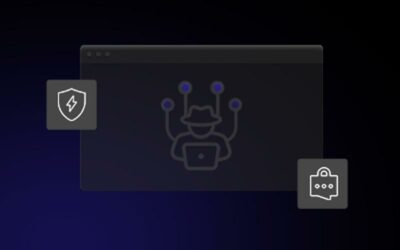There is a misconception that smart devices are safe. However, many reports about hacker attacks on smart home devices have already proven that wrong.
In 2019, one such incident happened in Wisconsin, where the hacker got access to a couple’s Google Nest camera and talked to them through it.
Reporting on this story, Business Insider contacted the device’s manufacturer, which confirmed there was no security breach on the device’s part. Further investigation has revealed that the victims of this breach were using compromised passwords.
This story shows how little we know about keeping our private data safe.
So, to protect ourselves from such unpleasant accidents, let’s take a look at a few tips on how to protect your private data on smart devices.
1) BE CAREFUL WHEN NAMING YOUR NETWORK
All your smart devices use your Wi-Fi network to connect and function. However, your Wi-Fi network also happens to be the gate through which a hacker can access your private data stored on smart devices.
The first thing that may come to your mind is creating a strong Wi-Fi password, but it’s not the only key player in protecting your Wi-Fi from hackers. It is also important to choose a proper name for your Wi-Fi network.
Here’s what you should keep in mind:
- Don’t use the default name. The router name set at the factory shows the address of your Wi-Fi network, opening the doors to private data attacks and security breaches. So, when setting up the Wi-Fi name, always change it from the default factory name.
- Don’t mention your address or your name. Similar to the previous point, it allows hackers to pinpoint your exact location.
- Avoid common SSID names. There is a list of frequently used SSID names that you shouldn’t use for your network because hackers often already have pre-built password cracking systems for them.
What does a good Wi-Fi name look like?
The more unique it is, the better.
Your Wi-Fi name is like your password, so, to protect it, don’t forget to use some symbols, lowercase and uppercase letters.
2) CREATE A GUEST WI-FI NETWORK
A lot of devices in your house depend on how protected your Wi-Fi network is, from your smart devices to your computer and smartphone.
So, if you have people frequently coming to your house and using your Wi-Fi, you need to protect your Wi-Fi from their devices, through which your private data can be accessed and compromised.
Moreover, since your smart devices are tied to your network, everyone who comes to your house and uses your Wi-Fi can use these devices, and you want to avoid that.
That’s why you need a separate guest Wi-Fi network for your visitors.
How to set up a guest Wi-Fi network at home
Here are a few steps to follow:
- On your computer, open a browser and go to your router’s interface.
- Go to the wireless setup.
- Activate the guest network feature.
- Confirm the network’s name.
- Enter the password for the guest network and save.
To protect your guest network better, you can disable SSID broadcast, which means that your guest will have to search for this network manually but the name of this network won’t pop up in the Wi-Fi search.
3) SET UP TWO-STEP VERIFICATION
One of the mistakes that the victims from Business Insider’s report made was not setting up the two-step verification despite being advised to do so by Google Nest.
Two-step or two-factor verification adds extra security to your private data stored on smart devices. It usually requires:
- entering a password
- confirming with your mobile phone or through an app connected to your mobile device
Check for the two-step verification option in the security settings of your smart devices. You will have to enter your phone number or download an authenticator app. However, adding a back-up phone number is essential in order to get a security code if the app doesn’t work.
Don’t forget to explore security settings
One of the biggest mistakes we make that can compromise our private data is not paying attention to the security settings of smart devices, which are often set to default.
So to protect your privacy, study the options provided in the settings of your smart devices, and don’t forget about other precautions, like setting a proper Wi-Fi name, guest network, and two-step verification.




